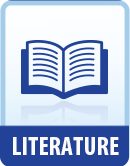|
This section contains 782 words (approx. 2 pages at 400 words per page) |

|
Lines 1-8
The nymph's reply begins in the subjunctivethe grammatical mood used to convey hypothetical or contingent action. The subjunctive is commonly expressed with the "if . . . were" construction: "If I were king," for example, or, in the first line of the poem, "If all the world and love were young." This usage sets up the primary rhetorical structure of the entire poem: the speaker is going to contrast the shepherd's vision, his hypothetical world, with the realities introduced by the word "but" in the second stanza. While the second part of the "if" statement"And truth in every shepherd's tongue"may seem the more biting, the nature of the contrast exists in the first part. What renders the shepherd's vision false, the nymph says, is time: the world and love do not remain young. Thus, while she finds lovely the shepherd's evocation of spring, shallow rivers, flocks...
|
This section contains 782 words (approx. 2 pages at 400 words per page) |

|




